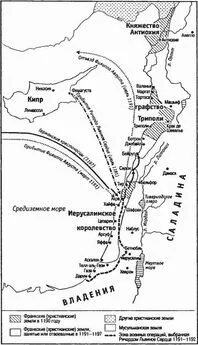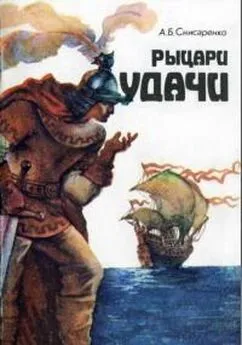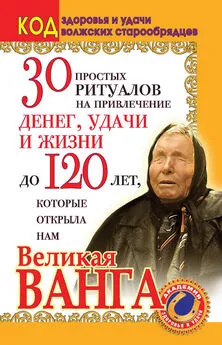Жан Флори - Боэмунд Антиохийский. Рыцарь удачи
- Название:Боэмунд Антиохийский. Рыцарь удачи
- Автор:
- Жанр:
- Издательство:Евразия
- Год:2013
- Город:Санкт-Петербург
- ISBN:978-5-91852-069-7
- Рейтинг:
- Избранное:Добавить в избранное
-
Отзывы:
-
Ваша оценка:
Жан Флори - Боэмунд Антиохийский. Рыцарь удачи краткое содержание
Герой новой книги известного историка-медиевиста Жана Флори Боэмунд Антиохийский входил в число предводителей Первого крестового похода и был одним из самых прославленных крестоносцев той эпохи. Сама его бурная жизнь, полная взлетов и падений, может стать иллюстрацией эпохи крестовых походов и истории западноевропейского рыцарства. Старший сын нормандского рыцаря Роберта Гвискарда, прошедшего путь от простого рыцаря до владыки Южной Италии, Боэмунд ответил на призыв папы Урбана II отправиться отвоевывать Святую землю. Вместе с крестоносным воинством он участвовал во всех крупных баталиях Первого крестового похода: сражался с турками-сельджуками в битве при Дорилее, осаждал ключевой стратегический пункт в Северной Сирии, Антиохию. Благодаря своей отваге, дипломатическим талантам и ловкости он стал правителем первого христианского государства на Ближнем Востоке — Антиохийского княжества. Жан Флори не случайно написал биографию Боэмунда — в этом опытном военачальнике и блистательном рыцаре, как в зеркале, отражались все достоинства и пороки крестоносного воинства: истовое благочестие и жажда наживы, беспримерная отвага и свирепая жестокость. На примере Боэмунда Жан Флори показывает изнанку крестоносной эпопеи: распри и подковерную борьбу за власть и влияние в лагере крестоносцев, тайные переговоры с византийцами и мусульманами, подготовку военных операций и сражений. Биография Боэмунда Антиохийского, созданная Жаном Флори, — это не только захватывающая эпопея, но и неизвестная история Первого крестового похода.
Боэмунд Антиохийский. Рыцарь удачи - читать онлайн бесплатно полную версию (весь текст целиком)
Интервал:
Закладка:
Cahen, Cl., Orient et Occident au temps des croisades, Paris, 1983.
Cardini, F., La culture de la guerre, X e-XVIII es., Paris, 1982.
Cardini, F.,Lozito, N., et Vetere, B. (éd.), Boemondo, storia di un principe normanno, Galatina, 2003.
Chalandon, F., Essai sur le règle d’Alexis I erComnène (1081–1118), Paris, 1900.
Chalandon, F., Histoire de la domination normande en Italie et en Sicile, Paris, 1907.
Chalandon, F., Histoire de la première croisade jusqu’à l’ election de Godefroy de Bouillon, Paris, 1925.
Charanis, P., «A greek source on the origin of the First Crusade», Spéculum, 24, 1949, p. 93–94.
Charanis, P., «Byzantion, the west and the origin of the first crusade», Byzantion, 19, 1949, p. 17–36.
Chazan, R., European Jewry and the First Crusade, Berkeley-Londres, 1987.
Chazan, R., The first crusade as reflected in the earliest Hebrew narrative, Viator, 29, 1998, p. 25–38.
Chevedden, P. E., «Canon 2 of the Council of Clermont (1095) and the goal of the eastern Crusade: “To liberate Jerusalem” or “to liberate the Church of God”?», Annuarium Historiae Conciliorum, 37, 2005, p. 57–108.
Cheynet, J.−Cl., «Mantzikert, un désastre militaire?», Byzantion, 50, 1980, p. 412–438.
Cheynet, J.−Cl., Byzance. L’Empire romain d’Orient, Paris, 2001.
Cheynet, J.−Cl., Pouvoir et contestation à Byzance (963–1210), Paris, 1990. Cheynet, J.−CL, «Thathoul, Archonte des Archontes», Revue des études Byzantines, 48, 1990, p. 233–242.
Cote, P. J., «Christians, Muslims and the “libération” of the Holy Land», Catholic Historical Review, 84, 1998, p. 1–10.
Cote, P. J., The Preaching of the Crusades to the Holy Land, 1095–1270, Cambridge (Mass.), 1991.
Concile de Clermont de 1095 et la Croisade (Le) [Actes du colloque universitaire international de Clermont-Ferrand (23–25 juin 1995)], Rome, 1997.
Concilio di Piacenza e le crociate (il) [Actes du colloque international de Piacenza], Piacenza, 1996.
Constable, G., Monks, Hermits and Crusaders in Medieval Europe, Londres, 1988. Coppola, G., «Bohémond Ier: Prince d’Antioche», Les Dossiers d’archéologie, 299, 2005, p. 88–97.
Coppola, G., «Les Normands au Proche-Orient. Batailles et château de la première croisade», Les Dossiers d’archéologie, 299, 2005, p. 76–87.
Cowdrey, H. E. J., Pope Gregory VII, 1073–1085, Oxford, 1998.
Cowdrey, H. E. J., «Pope Urban II and Idea of Crusade», Studi Medievali, 36, 1995, 2, p. 721–742.
Cowdrey, H. E. J., Popes, Monks and Crusaders, Londres, 1984.
Cowdrey, H. E. J., «The Papacy and the origins of crusading», Medieval History, 1, 3, 1991, p. 48–60.
Crozet, R., «Le voyage d’Urbain II et ses négociations avec le clergé de la France», Revue historique, 179, 1937, p. 271–310.
Crudo, G., La SS. Trinita di Venosa, Trani, 1899.
Cuozzo, E. et Martin, J.−M. (sous la dir. de), Cavalieri alla conquista del Sud. Studi sull’Italia normanna in memoria di Léon-Robert Ménager, Rome-Bari, 1998.
Cuozzo, E., «Quei maledetti Normanni.» Cavalieri e organizazzione militare nel Mezzogiorno normanno, Naples, 1989.
Cuozzo, E., La Cavalleria nel regno normanno di Sicilia, Antripalda, 2002.
Cutler, A., «The First crusade and the idea of “conversion”», The Muslim Word, 58, 1968, p. 57–71 et 155–164.
De Mas Latrie, L., «Les patriarches latins d’Antioche», Revue de l’Orient latin, 2, 1894, p. 192–205.
De Saulcy, F., «Tancrède», Bibliothèque de l’École des Chartes, 1842–1843, 1 ersérie, IV, p. 301–315.
Dédéyan, G., «L’Arménien Fîroûz: héros de la première croisade ou renégat et relaps?» dans Félonie, trahison, reniements au Moyen Âge, Les Cahiers du CRISIMA, n. 3, 1997, p. 511–522.
Dédéyan, G., «Le cavalier arménien», dans J.−P. Mahé et Robert W. Thomson (éd.), From Byzantium to Iran. Armenian Studies in Honour of Nina G. Garsoïan, Scholar Press (s.I), 1997, p. 197–228.
Dédéyan, G., Les Arméniens entre Grecs, musulmans et croisés. Études sur les pourvoirs arméniens dans le Proche-Orient méditerranéen (1068–1150), Lisbonne, 2003, 2 vol.
Delamelle, É., L’Idée de croisade au Moyen Âge, Turin, 1980.
Demurger, A., Chevaliers du Christ. Les ordres religieux-militaires au Moyen Âge (XI e-XVI esiècle), Paris, 2002.
Douglas, D. C.,The Norman Achievement, 1050–1100, Londres, 1969.
Douglas, D. C.,The Norman Fate, 1100–1154, Berkeley-Los Angeles, 1976.
Downey, G., A History of Antioch in Syria, Princeton, 1960.
Ducellier, A. et Micheau, F., Les Pays d’Islam, VII e-XV esiècles, Paris, 2000.
Ducellier, A., Le Miroir de l’islam. Musulmans et chrétiens d’Orient au Moyen Âge (VII e-XV es.), Paris, 1971.
Ducellier, A., Chrétiens d’Orient et Islam au Moyen Âge, VII e-XV esiècle, Paris, 1996.
Duparc-Quioc, S., La Chanson d’Antioche, Paris, 1976 (texte) et 1978 (étude).
Dupront, A., Du sacré, croisades et pèlerinages. Images et langages, Paris, 1987.
Dupront, A., Le Mythe de croisade, Paris, 1997 (4 vol.).
Edbury, P. W., Kingdoms of the Crusaders, from Jerusalem to Cyprus, Aldershot, 1999.
Eddé, A.−M., «Ridwan, prince d’Alep de 1095 à 1113», Revue des études islamiques, vol. 54, 1988 (pour 1986), p. 101–125.
Edgington, S. B., «From Aaachen: a New Perspective on Relations between the Crusaders and Byzantium, 1096–1120», Medieval History, 4, 1994, p. 156–169.
Edgington, S. B., «Romance and Reality in the sources for the Sieges of Antioch, 1097–1098», dans Dendrinos, C., Harris, J., Harvalia-Crook, E. et Herrin, J., Porphyrogenita, Essays… in Honour of Julian Chrysostomides, Ashgate, Aldershot, p.. 33–46.
Edgington, S. B. et Lambert, S. (éd.), Gendering the Crusades, Cardiff, 2001.
Epp, V., Fulcher von Chartres, Studien zur Geschichtsschreibung des ersten Kreuzzuges, Düsseldorf, 1990.
Erdmann, C., Die Entstehung des Kreuzzugsgedankens, Stuttgart, 1955 (1935); trad. angl. M.W. Baldwin et W. Goffart, The Origin of the Idea of Crusade, Oxford, 1977.
Falla Castelfranchi, M., «Il mausoleo di Boemondo a Canosa», dans I Normanni popolo d’Europa (1030–1200), Catalogo délia mostra (Roma, Palazzo Venezia, 28 gennaio — 30 aprile 1994), Venezia, 1994, p. 327–330.
Faureau-Lilie, M.−L., Die Italiener im Heiligen Land vom ersten Kreuzzug bis zum Tode Heinrichs von Champagne (1098–1197), Amsterdam, 1989.
Fedalto, G., La Chiesa latina in Oriente, Verone, 1973–1978 (3 vol.).
Fedalto, G., Le Chiese d’Oriente, t. I, Milan, 1984; t. II, Milan, 1993.
Fliche, A., Le règne de Philippe Ire, roi de France (1060–1108), Paris, 1912.
Flori, J., «Mort et martyre des guerriers vers 1100; l’exemple de la première croisade», Cahiers de civilisation médiévale, 34, 1991, 2, p. 121–139.
Flori, J., La première croisade. L’Occident Chrétien contre l’islam (aux origines des idéologies occidentales), coll. «La Mémoire des Siècles». Bruxelles, 1992 (3 eéd. 2001).
Flori, J., «L’usage “épique” des nombres, des chroniques a chansons de geste; éléments de typologie», PRIS-MA, 8, 1992, p. 47–58.
Flori, J., «La caricature de l’islam dans l’Occident médiéval; origine et signification de quelques stéréotypes concernant l’islam», Aevum, 1992, 2, p. 245–256.
Flori, J., «De la chronique de croisade à l’épopée… ou bien l’inverse?», Perspectives médiévales, 1994, p. 36–44.
Flori, J., «Oriens Horribilis: Tares et défauts de l’Orient dans le sources relatives à la première croisade», dans Monde oriental monde occidental dans la culture médiévale, (= Wodan n° 68), Greifswald, 1997, p. 45–56.
Flori, J., «Réforme-reconquista-croisade. L’idée de reconquête dans la correspondance pontificale d’Alexandre II à Urbain II». Cahiers de civilisation médiévale, 40, 1997, p. 317–335.
Flori, J., Croisade et chevalerie XI–XII siècles, Paris-Bruxelles, 1998.
Flori, J., «La croix, la crosse et l’épée. La conversion des infidèle; dans La Chanson de Roland et les chroniques de croisade, dans “Plaist vos oïr bone cançon vallant?”», Mélanges de Langue et dt Littérature Médiévales offerts à François Suard, Lille, 1999, t. I. p. 261–272.
Flori, J., Pierre l’Ermite et la première croisade, Paris, 1999.
Flori, J., La guerre sainte. La formation de l’idée de croisade dans l’Occident chrétien, Paris, 2001.
Flori, J., «De Barbastro à Jerusalem: plaidoyer pour une redéfinition de la croisade», dans Aquitaine-Espagne (VIII–XIII siècle), textes réunis et présentés par Ph. Sénac, Poitiers, 2001 (Civilisation médiévale, XII), p. 129–146.
Flori, J., Guerre sainte, jihad, croisade. Violence et religion dans le christianisme et l’islam, Paris, 2002.
Flori, J., «De la paix de Dieu à la croisade? Un réexamen», Crusades, 2, 2003, p. 1–23.
Flori, J., «Pour une redéfinition de la croisade», Cahiers de civilisation médiévale, 47, 2004, p. 329–350.
Flori, J., «Quelques aspects de la propaganda antibyzantine dans les sources occidentales de la première croisade», b Chemins d’Outre-mer. Études d’histoire sur la Méditerranée médiévale offertes à Michel Balard, Paris, 2004 (Byzantina Sorbonensia, 20), p. 331–343.
Flori, J., L’Islam et la fin des temps, L’interprétation prophétique des invasions musulmanes dans la chrétienté médiévale, Paris, 2007.
Fonseca, C. D. (éd.), Roberto il Guiscardo tra Europa, Oriente e Mezzogiorno, Galatina, 1990.
Forse, J. H., «Armenians and the First Crusade», Journal of Medieval History, 17, 1991.
Fossier, R., Les Relations des pays d’Islam avec le monde latin du X esiècle au milieu du XIII s., Paris, 2000.
France, J., «The Crisis of the First Crusade from the Defeat of Kerbogha to the Departure from Arqa», Byzantion, 40, 1970, p. 276–308.
France, «The Departure of Tatikios from the Crusader Army», Bulletin of the Institute of Historical Research, 44, 1971, p. 137–147.
France, J., «Anna Comnena, the Alexiad and the first crusade», Reading Medieval Studies, 10, 1984, p. 20–38.
France, J., «The occasion of the coming of the Normans to Southern Italy», Journal of Medieval History, 17, 1991, p. 185–205.
France, J., Victory in the East. A Military History of the First Crusade, Cambridge, 1994.
France, J., «The destruction of Jerusalem and the First Crusade», Journal of Ecclesiastical History, 47, 1996, p. 1–17.
France, J., et Zajac, W. G. (éd.), The Crusades and their Sources Essays presented to Bernard Hamilton, Aldershot, 1998.
France, J., «Two types of vision on the First Crusade: Stephen of Valence and Peter Bartholomew», Crusades, vol. 5, 2006, p. 21–38.
Frankopan, P., «Cooperation between Constantinople and Rome before the first crusade: a study of the convergence of interest in Croatia in the late eleventh century», Crusades, vol. 3, 2004, p. 1–13.
Читать дальшеИнтервал:
Закладка:
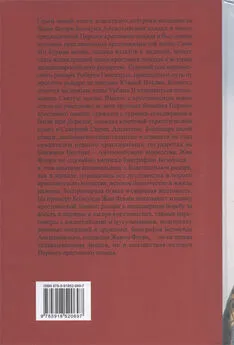
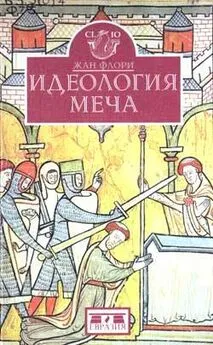
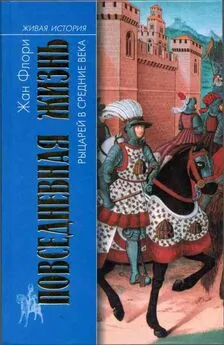
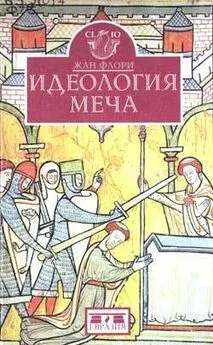

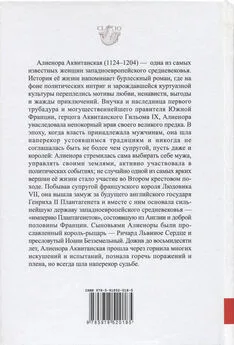
![О Генри - Рыцарь удачи [The Assessor of Success]](/books/1074400/o-genri-rycar-udachi-the-assessor-of-success.webp)
